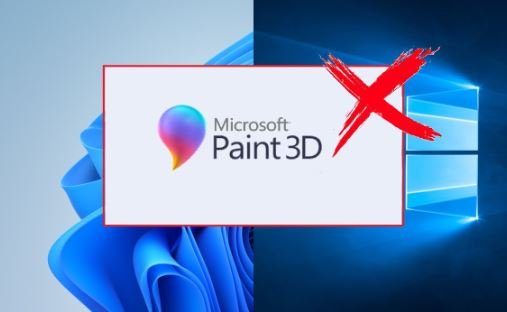
Microsoft has unexpectedly announced the discontinuation of Paint 3D. On November 4, the app will be deleted from the Microsoft Store and no longer available. This decision has left users wondering what comes next for 3D art enthusiasts and those who rely on Paint 3D’s unique capabilities. Let’s look at the reasons for this choice, the legacy of Paint 3D, and other options for creative projects.
The Rise and Fall of Paint 3D
Paint 3D was released in 2017 as a modern successor to Microsoft Paint, with the goal of incorporating 3D modelling and a more versatile tool set. It let users to build, edit, and exchange 3D models, catering to artists, designers, and enthusiasts alike. The software was part of Microsoft’s overall ambition to make 3D content production accessible to everyone, along with the Windows 10 Creators Update.
Despite its initial popularity, Paint 3D struggled to gain significant popularity. Many users preferred more powerful, dedicated 3D modelling tools or continued to use the traditional Paint for smaller tasks. Over time, Microsoft switched its focus to other projects, prompting the decision to stop Paint3D.
Why Is Microsoft Shutting Down Paint 3D?
The retirement of Paint 3D is part of Microsoft’s larger goal to consolidate its product offerings and focus on tools that better correspond with user requests and technology improvements. As the software market changes, businesses frequently need to reassess their portfolio and invest in areas with the most impact.
Microsoft’s move is likely due to shifting dynamics in digital art and design, as consumers desire more powerful and specialised tools. By ending Paint 3D, Microsoft can redirect resources to other new projects, ensuring that they continue to fulfil the changing needs of their users.
What’s Next for 3D Creators?
While Paint 3D may be closing down, the world of 3D production is large and full of options. Here are a few possibilities for individuals who want to explore 3D art and design.
Blender: It is a free, open-source 3D creation package that includes modelling, animation, rendering, and simulation. Blender is a robust option for individuals that require extensive 3D skills.
Tinkercad: It is an easy-to-use, browser-based 3D design application ideal for beginners and educators. Tinkercad is an excellent starting place for people new to 3D modelling.
SketchUp: It is known for its user-friendly interface and adaptability, provides both free and premium versions ideal for a variety of 3D design projects.
Autodesk Fusion 360: is a professional-grade 3D modelling program with extensive functionality for design, engineering, and manufacturing. It’s a great choice for individuals that need more powerful tools.
Microsoft’s 3D Builder: Although less feature-rich than some rivals, 3D Builder is nevertheless useful for basic 3D modelling and printing jobs.
Reflecting on Paint 3D’s Legacy
Paint 3D’s journey highlights the difficulties of launching new capabilities in a competitive and ever-changing digital environment. It acted as a stepping stone for many users interested in 3D creation, providing an easy-to-use platform for experimenting with 3D models. Although Paint 3D was short-lived, its impact on accessible 3D art should not be underestimated.
Conclusion: Embracing Change, Looking Forward
As Microsoft bids farewell to Paint 3D on November 4, users are invited to explore the wide range of 3D modelling tools available today. Whether you’re an experienced professional or a curious beginner, there’s a tool to fit your creative demands. Accepting change can lead to new chances and advances in the field of digital art.
More stories click here




